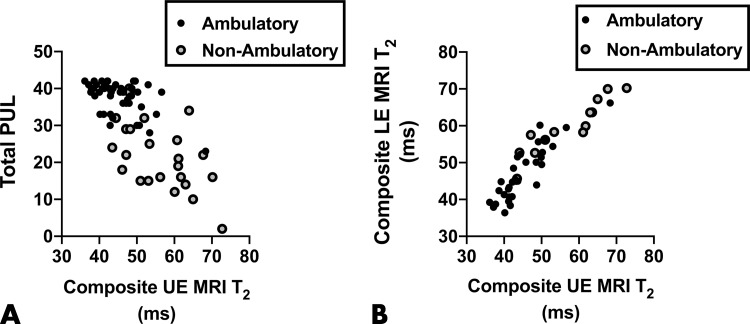Figure 5:
Correlation scatterplots. A, Total performance of upper limb (PUL) and the composite upper extremity (UE) MRI T2 values were negatively correlated (ρ = −0.65; P < .001) in participants with Duchenne muscular dystrophy (DMD) and were negatively correlated in both ambulatory (ρ = −0.41; P = .003) and nonambulatory (ρ = −0.50; P = .01) participants with DMD when analyzed separately. B, Upper versus lower extremity (LE) MRI T2 composite measures were strongly positively correlated (ρ = 0.93; P < .001), including in both ambulatory (ρ = 0.88; P < .001) and nonambulatory (ρ = 0.97; P < .001) participants with DMD when analyzed separately.

